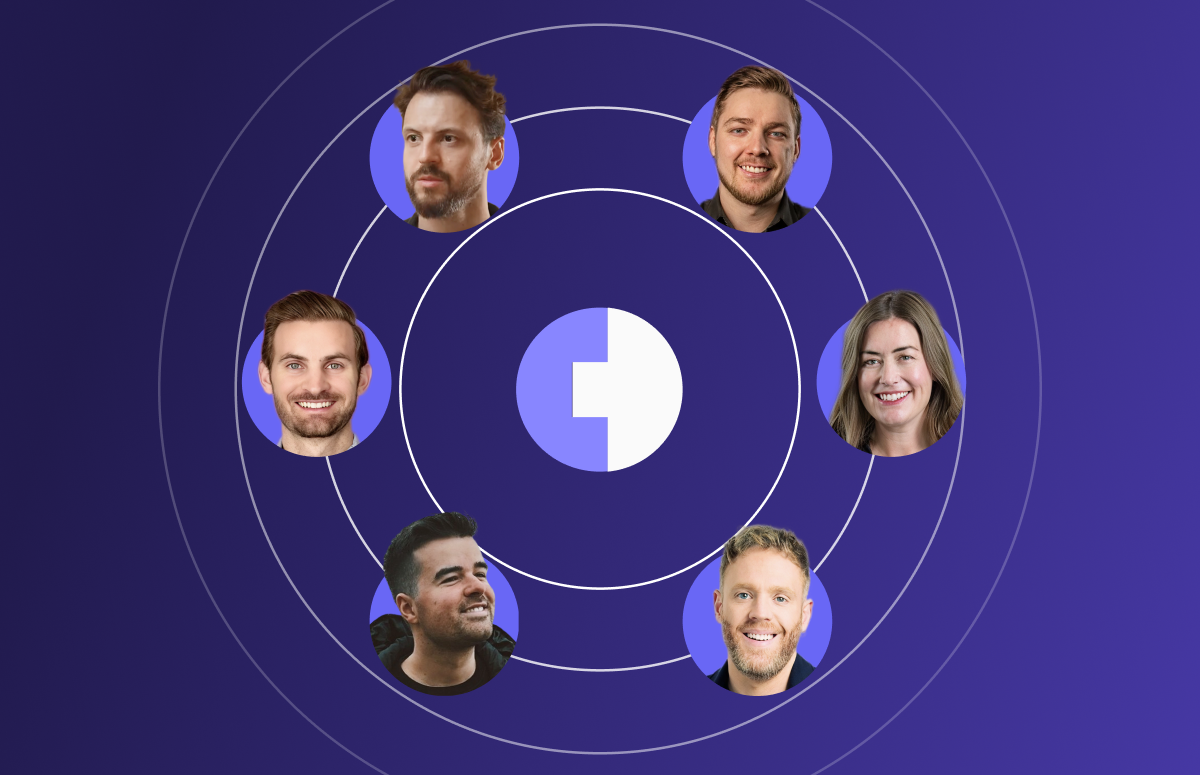Lead Generation vs Demand Generation: A Side-by-Side Comparison
Demand gen vs lead gen explained
Learn more about how to pivot from lead gen to demand gen in Alice’s book 👇
Marketers often use the terms demand generation and lead generation interchangeably. But while they’re closely connected, they play very different roles in your marketing funnel.
So, what is the difference between lead generation and demand generation?
In short, demand generation builds awareness and interest in your brand or product before someone is ready to buy. Lead generation, on the other hand, aims to capture buyer intent and turn that interest into actionable leads.
In this article, we’ll break down the difference between lead generation vs demand generation, when to use each, and how the two work best together to drive pipeline and revenue.
Let’s start 👇
What is demand generation?
Demand generation (or demand gen) is a long-term strategy focused on creating awareness, educating your market, and building trust with potential buyers. It’s about generating demand before someone is ready to speak to sales.
It includes tactics like:
- Ungated, value-led content (e.g. blog posts, podcasts, videos).
- Social selling and personal branding on platforms like LinkedIn.
- Paid media focused on brand awareness or problem education.
- Influencer collaborations and thought leadership.
- Dark social distribution (e.g. Slack groups, communities, DMs).
The goal is to educate and nurture your audience so your brand is top of mind when they’re ready to buy.
Alice de Courcy, Cognism CMO, explains why this matters:
“It’s about dividing your efforts – convert the 1% already in-market, but focus on generating demand in the 99% who aren’t… Respect how consumers want to be marketed to; content should be friction‑free and always‑on.”
Demand generation sits at the top of the funnel and isn’t focused on immediate conversions. Instead, it prioritises metrics like:
- Brand search volume.
- Website traffic.
- Content engagement.
- Inbound pipeline growth.
This approach is sometimes described as demand creation. And it’s different from demand capture, which focuses on harvesting existing intent.
What is lead generation?
Lead generation (or lead gen) is about converting interest into leads your sales team can follow up on. It’s more focused on capturing and qualifying intent at the middle and bottom of the funnel.
Common lead generation tactics include:
- Gated content (eBooks, whitepapers).
- Demo request forms.
- Webinars with sign-ups.
- Lead magnets and free tools.
- Paid search targeting buyer keywords.
Lead generation aims to collect contact information and move prospects into your CRM or marketing automation platform.
The focus is on measurable outcomes like:
- MQLs and SQLs.
- Form fills and conversion rates.
- Email nurturing performance.
While demand gen creates awareness, lead gen converts that awareness into sales opportunities.
The difference between demand generation and lead generation
Let’s look at the key differences between lead generation and demand generation:
You might also hear these differences described as:
- Demand creation vs demand capture.
- Demand vs. lead generation.
- Growth marketing vs demand generation.
To summarise:
Demand generation creates awareness and interest in a company’s products and services. Whereas lead generation is when you turn prospects’ attention into hot leads, those who are ready to become customers.
Fran Langham, Director of Demand Generation at Cognism, said:
“With the lead‑generation mindset, campaigns were e‑books on landing pages... ultimately they took a long time to convert—or didn’t convert at all… This new DG campaign approach tells a story that resonates, has creative direction, is present across channels and formats.”
Unlike lead gen, demand gen is less transactional.
Here’s why:
Demand gen and lead gen activities take place at different stages of the B2B sales funnel. Creating demand is at the very top of the funnel. It’s when you bring prospects into your buying process. For example, when they visit your social media profiles or your homepage.
Lead generation happens once the prospects pass through that stage. They show enough interest in your brand or product to exchange their personal information to learn more. For example, when they register for a demo via a landing page.
Demand generation is higher up the sales funnel and encompasses lead generation. So, if you don’t generate enough SQL leads, it can mean you have a problem with generating demand.
It’s simple really!
If people don’t know your brand exists or what problems your solution can fix, it’s hard to convert a prospect into a lead.
Check out how Helen Gillbe, EMEA Demand Generation Director at Proofpoint, pivoted from lead generation to demand generation. She explains the differences between the two strategies and the challenges she encountered. 👇
Demand generation vs lead generation: Which is better?
There’s no one-size-fits-all answer to who wins the demand gen vs lead gen battle.
It depends on your goals, resources and market maturity.
That said, modern B2B buyers don’t want to fill out forms or be chased by SDRs after downloading a PDF.
Alice said:
“You have to move beyond an MQL‑driven lead generation mindset and focus on generating demand for the 99% who aren’t yet in market. Stop forcing people through funnels who aren’t ready to buy.”
That’s why many companies, like Cognism, are shifting away from traditional lead generation.
Instead, we’ve invested in a demand gen strategy focused on:
- Ungated content.
- Brand-led paid media.
- Building influence on LinkedIn.
This pivot from lead gen to demand gen led to a 4x increase in inbound pipeline, with higher win rates and faster sales cycles.
Liam Bartholomew, VP Brand & Customer Marketing at Cognism, said:
“We were generating so many leads… but those people weren’t converting down into revenue. Our close rate from content leads was around 0.2% compared to nearly 20% from direct inbound enquiries. Demand gen just changes the whole perspective… makes it more complicated and harder to do, but a lot more interesting than just collecting email addresses.”
But lead gen still has its place, especially when paired with a strong demand engine. You need demand gen to educate and prime your audience, and lead gen to convert high-intent prospects when they’re ready to buy.
How lead and demand generation work together
Modern B2B marketing has shifted from generating as many leads as possible to generating demand.
This is because buyers spend more and more time evaluating purchases and often make decisions outside easily measured channels. One example is dark social or the dark funnel.
Liam said:
“When we moved to demand gen, we’d grown inbound demand from two to six million in pipeline… it’s now at about 13 million — all just people coming straight into us.”
Without solid demand generation, lead generation is cost-inefficient and doesn’t provide the value needed for growth. If your sales team tries to convert leads before they are fully aware of your solution, the conversion rates (e.g. via Facebook or LinkedIn ads) will be low.
That’s why demand generation, unlike lead generation, focuses on constantly providing potential customers with valuable content for free.
This strategy captures existing market demand and expands your audience.
As Fran said:
“It makes more sense to focus on the ‘who’ rather than the ‘how many’. You might get 1,000 ebook downloads, but many won’t be your ideal customer.”
That said, rather than lead gen vs demand gen, think about how they complement each other:
- Demand generation creates market awareness and warms up your ICP.
- Lead generation captures that interest and routes it into your funnel.
Used together, they help you:
- Build trust with your audience.
- Drive more qualified leads.
- Improve pipeline quality and conversion rates.
The key is balance. Don’t rely solely on lead capture tactics without fuelling demand. And don’t run brand campaigns without a plan to convert that interest.
Key takeaways: Demand generation vs lead generation
The difference between lead generation and demand generation isn’t just theoretical; it’s strategic.
Winning B2B brands generate leads, but they also create demand, build community, and drive inbound interest that converts faster and more efficiently.
Whether you’re exploring growth marketing vs demand generation, or trying to improve lead demand generation overall, the most innovative marketers blend both.
Because in B2B marketing, whoever builds trust and captures attention wins.
Try out lead demand generation course
Now you know the difference between demand gen and lead gen, it’s time to focus your energy on creating demand.
And how better to start than with a demand gen course from the experts!
Best of all:
It’s ungated.
Because that’s lesson one of demand gen, after all.
Click to start learning 👇
/CTAs%20(SEO)/cognism-dg-playbook-cta-webp.webp?width=1376&height=528&name=cognism-dg-playbook-cta-webp.webp)
/SMB%20ABM/Blog_Image_How%20SMBs%20Can%20Run%20Enterprise-Level%20ABM%20on%20a%20Lean%20Budget%20%20Resource%20Card.webp)

